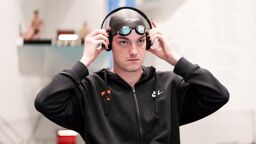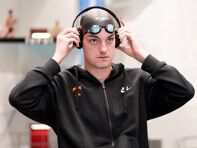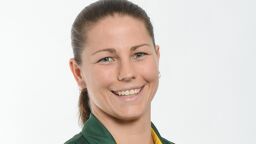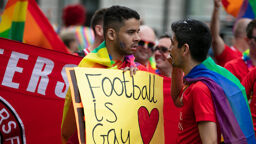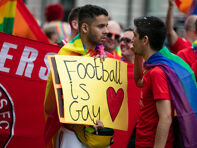Part of Outsports’ series on our 100 most important moments in gay sports history.
 Olympics, 2004. While the IOC has a long history of insensitive and often unproductive gender tests, they have also been ahead of the curve at times with transgender issues. In October 2003 a committee convened in Stockholm, Sweden, to discuss the inclusion of transgender athletes at the following Olympics. On May 17, 2004, the IOC adopted the group’s recommended policy (the Stockholm Consensus) that opened the door for transgender athletes to compete in the upcoming Athens Olympic Games.
Olympics, 2004. While the IOC has a long history of insensitive and often unproductive gender tests, they have also been ahead of the curve at times with transgender issues. In October 2003 a committee convened in Stockholm, Sweden, to discuss the inclusion of transgender athletes at the following Olympics. On May 17, 2004, the IOC adopted the group’s recommended policy (the Stockholm Consensus) that opened the door for transgender athletes to compete in the upcoming Athens Olympic Games.
The policy has three main requirements for both MTF and FTM trans athletes:
Part of Outsports’ series on our 100 most important moments in gay sports history.
 Olympics, 2004. While the IOC has a long history of insensitive and often unproductive gender tests, they have also been ahead of the curve at times with transgender issues. In October 2003 a committee convened in Stockholm, Sweden, to discuss the inclusion of transgender athletes at the following Olympics. On May 17, 2004, the IOC adopted the group’s recommended policy (the Stockholm Consensus) that opened the door for transgender athletes to compete in the upcoming Athens Olympic Games.
Olympics, 2004. While the IOC has a long history of insensitive and often unproductive gender tests, they have also been ahead of the curve at times with transgender issues. In October 2003 a committee convened in Stockholm, Sweden, to discuss the inclusion of transgender athletes at the following Olympics. On May 17, 2004, the IOC adopted the group’s recommended policy (the Stockholm Consensus) that opened the door for transgender athletes to compete in the upcoming Athens Olympic Games.
The policy has three main requirements for both MTF and FTM trans athletes:
- They must have had gender reassignment surgery
- They must have legal recognition of their assigned gender
- They must have at least two years of hormone therapy
While not perfect (it does not, for example, give insight into intersex issues), this model has become the standard bearer against which many high-level sports organizations have measured themselves. The IOC adoption of the policy gave impetus (and sometimes political cover) for other groups to do the same.
For more information:







